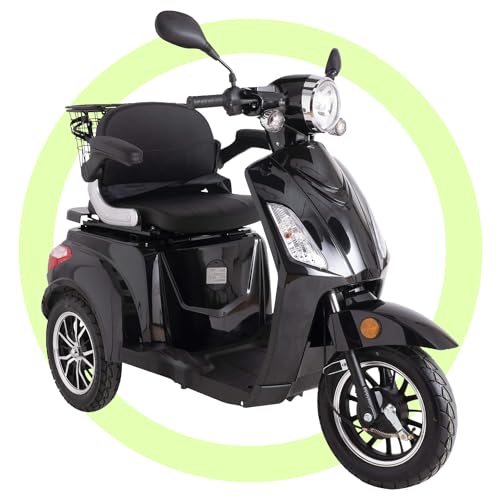Scooter Green Power

Scooters are fun easy, safe and secure way to get around. They're also environmentally friendly. But, greenpower mobility scooter to do your research before purchasing one.
Scooters aren't as carbon-free as they appear. They are not without cost. The process of mining and manufacturing the batteries that power electric scooters produces significant emissions. The environmental impact of transporting scooters from charging stations to where the riders are added.
Battery Life
The battery is one of the most important components of any scooter, and it can have an enormous impact on how green your scooter is. When a battery dies, it releases toxic chemicals that could have a massive ecological and economic impact.
Electric scooters are extremely energy efficient. They use only a less than the amount of fuel used by cars to travel the same distance. This helps reduce air pollution and climate change, and can also help to avoid congestion in traffic. They still produce a small amount of carbon dioxide when charging. If the energy source is from renewable sources, this can make electric scooters even greener.
Many scooters have interchangeable batteries, which can be used to charge other scooters in a fleet. This means there is less need for companies transporting their scooters to recharge. Certain companies are also working with hyper-local energy production, which allows the grid to use the power stored in the batteries to balance supply and demand.
If you plan to utilize your scooter for longer journeys, then consider purchasing larger capacity batteries, or a second battery that can be swapped out. This will allow you to cover longer distances without stopping to recharge the battery every so often. This is especially important if you reside in an area that experiences harsh weather conditions. It is also a great idea to charge the battery before you store it for weeks or months. Failure to do this may cause the battery to stop keeping a charge until you require it again and can be a hassle and dangerous.
In general, electric scooters are much more environmentally friendly than other vehicles or modes of transport. They create fewer greenhouse gases which contribute to global warming, and require less raw materials to make. They can also be charged with clean electricity which could significantly reduce their carbon footprint. When looking at the sustainability of a scooter, it is important to take into account its entire lifecycle. This includes the manufacturing process and the energy required to charge it, and its disposal.
Design
Electric scooters' design can have a significant impact on their environmental reputation. Scooters that have regenerative brake systems, for instance they can convert the energy that would be lost otherwise into more battery life, allowing them to travel further on each charge. Many scooters are also designed for shorter distances, reducing the number of trips to the vehicle needed. And, unlike traditional vehicles, scooters emit no carbon dioxide during use.
It is essential to take into account the environmental impact of electric scooters' whole life-cycle. This includes the extraction of raw materials, the manufacturing and the disposal at the end of life. The production of lithium ion batteries is energy intensive and can cause habitat destruction as well as soil and water pollution, and greenhouse gases. In addition, the transportation and mining of raw materials can have a significant impact on the environment.
The lack of durability is another important issue with scooters. The average scooter lasts around a month or so in the streets before being discarded. powered mobility scooter could mean that scooter companies have to mine more aluminum and engage in more shipping and other resources-intensive activities. Since the majority of scooters are rented, instead of being owned by the owner, they have to be taken in, and then transported (often in cars) to a recharging station once their batteries run out.
Scooters may contain hazardous wastes that can pose a risk to the public health and the environment. If not recycled properly, the waste can end up in landfills or rivers which could be a danger to people and wildlife.
Although scooters are generally more beneficial for the environment than traditional vehicles, there are still some issues that must be addressed to ensure that they are completely eco-friendly. If all scooters were made of 100% recyclable materials and if the energy they powered was sourced from renewable sources, then they would be a completely carbon-free mode of transportation.
Maintenance
The price of electric scooters is less expensive than an ordinary vehicle. However, it needs routine maintenance. The main element is the battery pack. It must be recharged regularly and replaced when it is nearing the end of its life. The speed controller also plays a role in this as well. This can impact the performance if it is faulty.
If the scooter cuts out or stops functioning when riding, it usually indicates that the battery pack is not working properly. It could be a fuse or a battery charger that isn't functioning correctly. Make sure that the charger's light are green (charging) and not red (off). It is recommended to charge the scooter every time it's stored, even if you're not using it.
Another issue that is common is a malfunctioning normally closed brake lever switch. To test this, unplug the wire from the brake switch and connect the two terminals to the controller connector, where the wire was unplugged. If the scooter is constantly running, the switch may be malfunctioning.
Throughout the day, scooter companies allow people to drive cars or trucks and haul back into their offices any electric scooter that is out of power. This kind of service can help keep the fleet in working condition. It also lets them charge the batteries for the next ride. However, many consumers don't have this luxury and must replace their scooters if they run out of juice while on the go.
